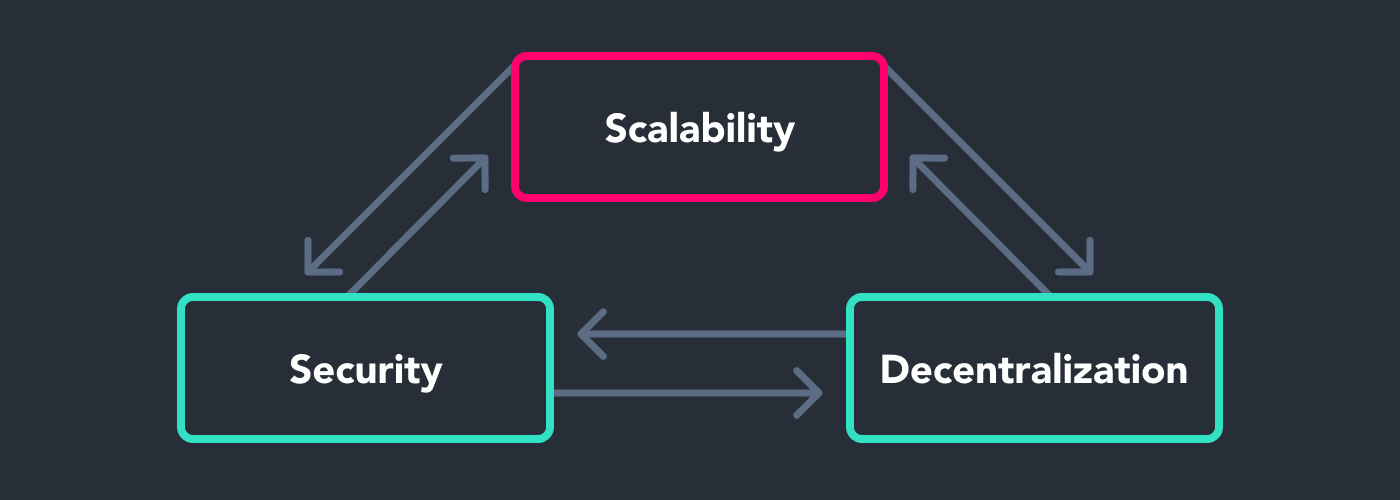Eth2’s Approach to Solving the Scalability Trilemma
How the Ethereum network is working toward solving the scalability trilemma that it will inevitably face when more users onboard.

The Beacon Chain has shipped and attention is moving towards the future of Eth2 — the merge with Eth1 and improved scalability as has been promised since the upgrade was first envisioned. Scalability ultimately determines the capacity of any network, and has been the key limiting factor for the mainstream proliferation of Ethereum and all other blockchains to date. New applications and use cases are popping up nearly everywhere from the crypto-verse to health care, AI, and beyond but the largest roadblock to their success is accomodating ever-growing user bases without compromising on inherently important considerations.
It’s not sufficient that a blockchain process 15 transactions per second (tps) (as does Ethereum currently) if it’s going to connect large factions of society in various ways. Current network congestion comes with high gas fees and long wait times of which nobody wants to pay and endure. Until true blockchain scalability has been achieved, centralized solutions that offer faster and cheaper alternatives will remain supreme. When given the choice, it’s a no-brainer that the average user will choose a system (like Visa for example) that is many times faster, cheaper, and already well accepted in the public eye.
The underlying problem limiting blockchain’s spread was first coined by Vitalik and is known as the Scalability Trilemma. Thus far, projects have had to make tradeoffs between three important considerations, Security, Decentralization, and Scalability.

For each two selected, the third is inevitably reduced. For most blockchains, decentralization and security are favored, and scalability suffers. The reason being the very nature of blockchain technology — decentralization is paramount to ensure diversification of ownership across network participants and security is crucial to glue everything together. Lose decentralization, a network is likely not a blockchain at all, lose security and you don’t have a reliable network to speak of.</strong >
While theoretically not impossible to achieve all three, it has proven difficult. Solving the Trilemma is a collective effort and will be one of the most important achievements in blockchain development and a crucial step before the technology can really move into the mainstream.
There are a variety of approaches to solving the Trilemma, each with its inherent drawbacks. They are mostly divided across Layer 1 and Layer 2 scaling solutions. Layer 1 implies modifications to the blockchain itself and Layer 2 are mechanisms implemented off-chain. The most common solutions attempted so far are:
The implementation of each one of these solutions alone increases scalability significantly but so far at the expense of at least one of the other parts of the triangle. Take Peercoin, the first blockchain to introduce Proof of Stake (PoS) consensus in the form of Delegated PoS. Scalability increased but the delegation approach pulled away at decentralization. State channels, on the other hand, maintain decentralization but security issues arise as the channels must be periodically checked up on to maintain their reliability. Each solution that you look at has at least one drawback from decentralization or security or both.
The direction taken by the Ethereum core team and larger community over the next few months will determine how exactly Eth2 will tackle the Trilemma and ultimately accommodate an exponential increase in demand. Talks of a new, non-linear roadmap highlight a promising way to boost scalability even more than once planned by implementing both Layer 1 and Layer 2 solutions. Layer 1 = PoS + Shards, Layer 2 = Rollups.
What’s known for sure at this point is PoS — the Beacon Chain is up and running and validators are proposing and attesting while receiving rewards as they should. The linear roadmap (Phase 0 → 1 → 2) with 64 shards is being re-evaluated. The final implementation likely consists of Shards and Rollups, but the exact solution still remains to be seen.
Rollups have been making waves across the larger Ethereum community in a big way lately and are more of a hybrid layer 2 solution as they do keep some data on-chain while computation and state storage is moved off of it. The advantages of rollups are clear, an EVM can be run directly inside a rollup allowing for existing Ethereum apps to migrate and work inside of them + on-chain space is significantly reduced leading to much lower gas fees.
Rollups are still under development but the community sentiment in favor is high. With rollups, it is theoretically possible for Ethereum to reach a 100-fold improvement in tps without sacrificing heavily on decentralization and security. Add that to the already implemented PoS and some shards, and you’ve got a network processing up to 5000 transactions per second,
Today, Ethereum has ~15 TPS.
If everyone moves to rollups, we will soon have ~3000 TPS.
Once phase 1 comes along and rollups move to eth2 sharded chains for their data storage, we go up to a theoretical max of ~100000 TPS.
Eventually, phase 2 will come along, bringing eth2 sharded chains with native computations, which give us… ~1000–5000 TPS.
Now we are talking about a highly decentralized Ethereum with throughput comparable or better than VISA! A major accomplishment if and when it happens and a potential solution to the pesky Scalability Trilemma.
Rollups are a viable and powerful new technology to help Ethereum effectively scale. Once combined with PoS and potentially shards, the network is first in line to surmounting the Scalability Trilemma and gaining (even more) mainstream adoption. The monumental waves of newcomers into DeFi as of late are no match for what a fully formed Eth2 will deliver — no more latency, no more crazy gas fees — all while promoting decentralization and security core to the network’s key offerings and beliefs.